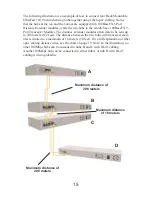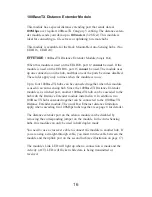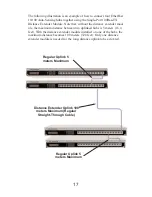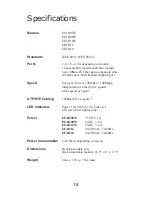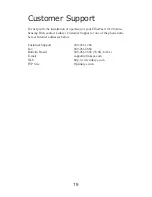
Planning Your Network
The rules that govern how nodes and hubs are distributed across a network
are important to ensure the integrity of your data. Cabling specifications,
distance limits, and other topology rules must be followed in order to avoid
collisions or data loss.
The Auto-Sensing Hub is equipped with RJ-45 ports that can automatically
adjust to either 10Mbps or 100Mbps speeds. Each port can operate at
either speed, completely independent of the other ports’ speeds, and can be
connected to a workstation, file server, print server, hub, or another node
with twisted-pair cabling.
Although there are different grades of cabling, you must use EIA 568
Category 5 unshielded twisted-pair (UTP) for each connection you make,
and each cable should not exceed 100 meters, (328 feet), in length. Fast
Ethernet networks require Category 5 cabling. Category 5 cabling can be
obtained at most computer stores, or you can crimp your own. See page 11
for cabling specifications. Here are some important cabling rules to fol-
low:
· Computers should never be connected directly together on a network.
They should always be connected to a hub.
· Only two 100Mbps Fast Ethernet hubs can be cascaded, (or uplinked),
together. To cascade more than 2 100Mbps hubs, a switch or a repeater
must be used.
· The maximum cable length from a node to a repeater, switch, or hub is
100 meters (328 feet).
· The maximum length for a Category 5 cable between a 100BaseTX or
10BaseT workstation and a stackable or other shared bandwidth hub is
100 meters (328 feet).
· The maximum distance between 2 100BaseTX hubs without a switch is
5 meters (16.4 feet).
· The maximum distance between 2 10BaseT hubs, (or a 10BaseT hub and
an Auto-Sensing hub), is 100 meters (328 feet).
4

















